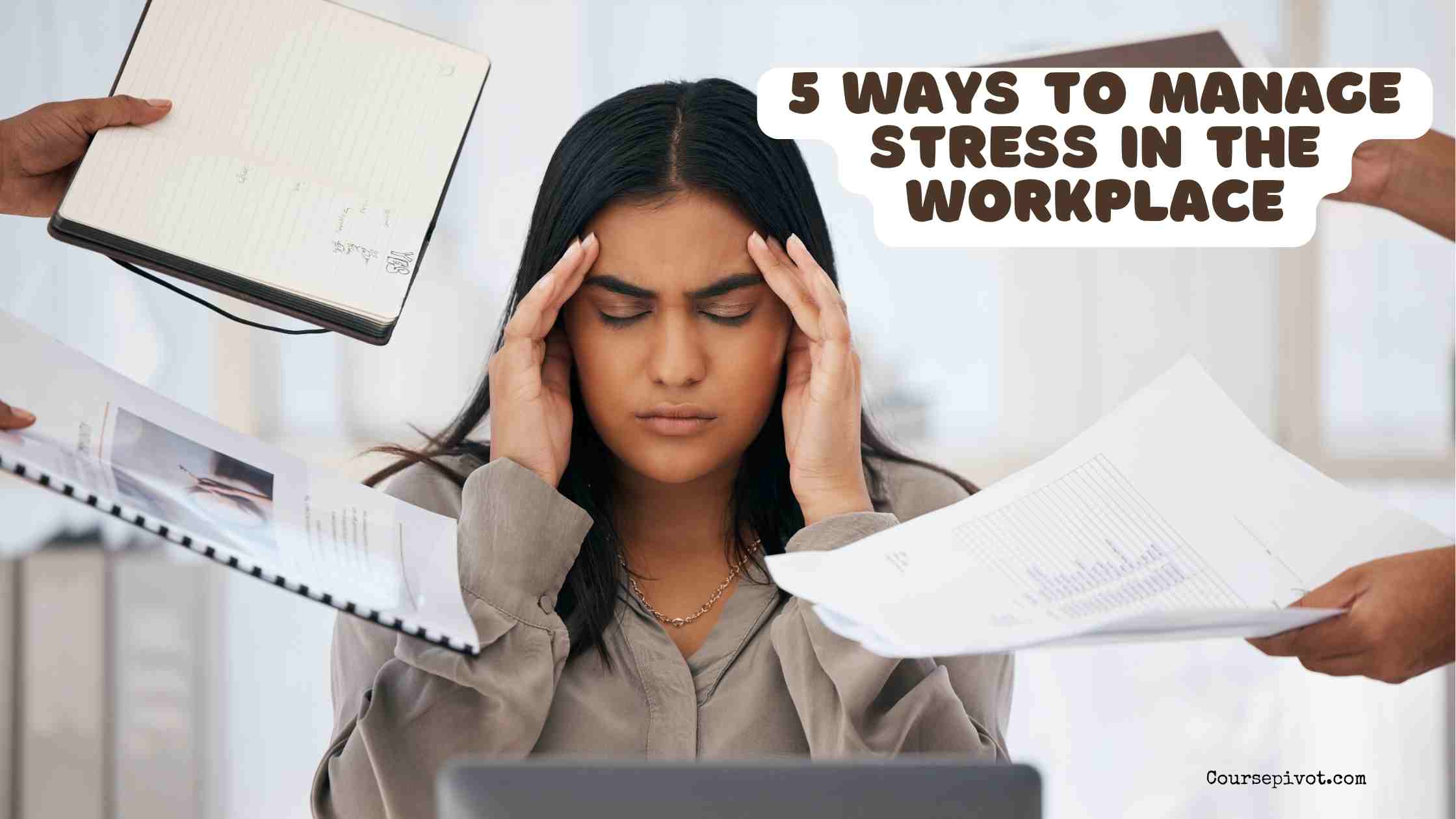
5 Ways to Manage Stress in the Workplace
Ever feel crushed by tight deadlines or workplace tension? You’re not alone—83% of employees face workplace stress, per recent workforce studies. It can drain your focus and energy fast.
Effective stress management can change how you navigate your job. It’s about thriving, not just getting by. This blog shares five practical ways to manage workplace stress to boost your well-being and performance.
Table of Contents
Why Workplace Stress Matters
Ongoing workplace stress can spark burnout, slashing productivity by 20%, per organizational research. It fuels anxiety, irritability, and physical issues like fatigue. Tackling it head-on builds a healthier work life. Proactive steps keep stress from running the show.
1. Prioritize Time Management
Time management cuts workplace stress by adding structure. Break tasks into smaller steps to avoid overwhelm. Tools like calendars or apps help, with 70% of users feeling less stressed, per productivity studies. A daily plan keeps you on track.
Practical Tip: The Pomodoro Technique
Work in 25-minute sprints with short breaks to stay focused. This boosts productivity by 30%, per time management data. Apps like Focus@Will track your sessions. Try it for a week to see results.
2. Practice Mindfulness and Breathing Exercises
Mindfulness eases stress in tense moments. The 4-7-8 breathing technique lowers cortisol by 15%, per health studies. Daily practice strengthens your resilience. Five minutes can sharpen your focus.
Actionable Step
Set a mid-morning alert for a three-minute breathing exercise. Inhale for four seconds, hold for seven, exhale for eight—repeat five times. Apps like Headspace have quick guided options. It’s a fast way to reset.
3. Foster Open Communication
Miscommunication drives stress, with 60% of workplace conflicts tied to unclear expectations, per HR studies. Regular check-ins with colleagues or managers clarify priorities. Open dialogue builds trust and cuts confusion. Feeling understood lightens your mental burden.
Actionable Step
Request weekly one-on-one meetings with your supervisor. Prepare a list of projects and questions. This aligns teams, a habit used by 65% of top performers, per management data. It also highlights your initiative.
4. Set Boundaries for Work-Life Balance
Overworking spikes stress, but 75% of employees with firm boundaries report better mental health, per wellness research. Avoid after-hours emails to protect personal time. Clear limits show self-respect, encouraging others to follow. This balance fuels better work output.
Actionable Step
Set “no-work” hours, like 7 PM to 7 AM, and stick to them. Share this clearly with your team. Mute notifications during these hours via phone settings. Consistency locks in the habit.
5. Leverage Physical Activity
Physical activity reduces stress by 40%, per fitness studies, thanks to endorphins. Short walks or desk stretches during breaks lift your mood. Even light movement offsets sedentary work. Make it a daily routine for lasting impact.
Creative Idea: Walking Meetings
Suggest walking meetings for one-on-ones—80% of employees find them refreshing, per workplace surveys. A 15-minute walk boosts creativity and eases stress. Desk yoga works if outdoor access is limited. These habits build long-term calm.
Actionable Step
Schedule a 10-minute walk during lunch breaks three times a week. Aim for 2,000 steps per session, tracked with a fitness app. Invite a colleague for accountability. Check your mood after a month.
Why These Strategies Work
Each strategy hits a different stress trigger, from workload to mental strain. Time management and boundaries add structure, while mindfulness and exercise support mind and body. Communication clears tension-causing gaps. Together, they help 85% of users cope better, per wellness data.
Read How Employee Benefits Affect Total Employment Compensation
Additional Tips for Long-Term Stress Management
- Seek Support: Use employee assistance programs (EAPs), offered by 70% of large firms, per HR data, for free counseling.
- Organize Your Workspace: A clean desk reduces mental clutter, boosting focus by 15%, per environmental psychology studies.
- Celebrate Small Wins: Recognize completed tasks to stay motivated, increasing drive by 25%, per behavioral research.
Key Takeaways
Workplace stress is manageable with intentional steps. Time management, mindfulness, open communication, boundaries, and physical activity offer a clear path to relief. These data-backed strategies provide practical tools to enhance your work life. Start with one or two this week to feel the shift.
Cite this article
You can copy and paste your preferred citation format below.
Martin, L. & Arquette, E.. (2025, July 1). 5 Ways to Manage Stress in the Workplace. Coursepivot.com. https://coursepivot.com/blog/5-ways-to-manage-stress-in-the-workplace/


